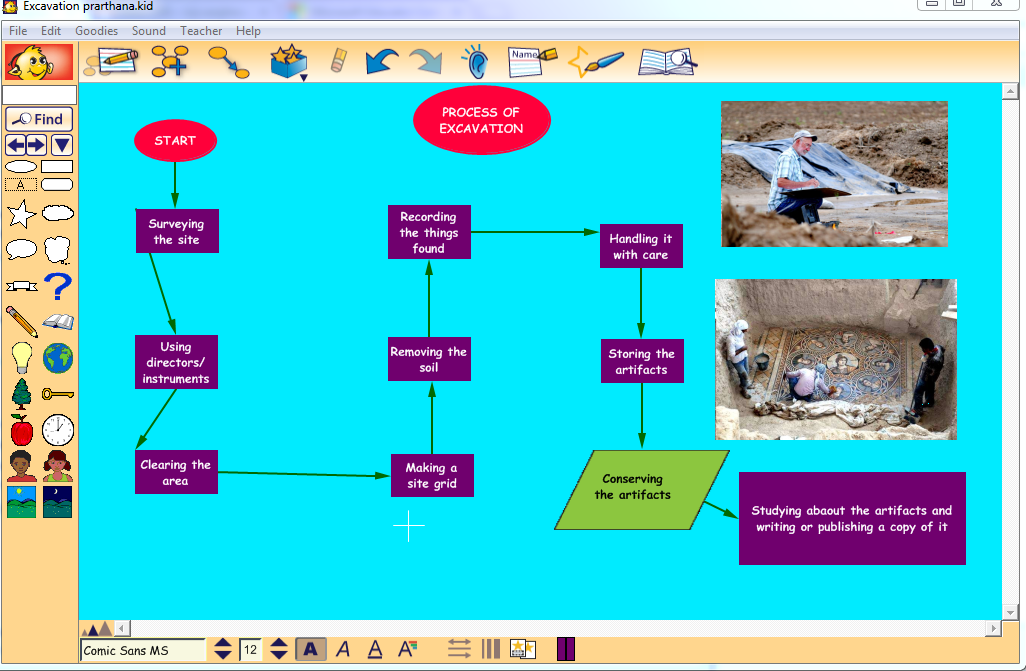Excavation Contractors Near Me for Dummies
Wiki Article
See This Report on Grading Contractors
Table of ContentsThe Ultimate Guide To Concrete ContractorsExamine This Report about Excavation Contractors Near MeFascination About General ContractorAn Unbiased View of Demolition8 Easy Facts About Excavator Explained


Scrapers or Pans excavate dirt in one place, haul and dump the dirt in an additional place (trencher). It is hard to match the performance of scrapers for cut/fill dirt operation if the haul distance is much less after that a mile. Scrapes are normally drawn by a rubber tire wheel tractor as well as are in some cases pressed through the cut location by a bulldozer.
There are lot of times that scrapes are not made use of for site grading as well as a dump vehicle is utilized: the haul may be to long, the haul may cross roads where scrapes are not permitted, hard rock may be experienced, devices availability, etc. Dispose vehicles remain in common use and probably call for little discussion.
"Rock body" beds, on the various other hand, have no tailgates as well as can dispose any size rock, although their quantity ability is diminished. Compaction Devices raises the density of the soil and in some cases supplies a smooth, rolled surface area.
Little Known Questions About Trencher.
From an easy test pit to percussion boring to core drilling the proprietor has increasingly more pricey choices that produce increasingly better data regarding the website underground. For instance, the Proprietor on a 100,000 SF building job might license twenty uninteresting places with split spoon dirt samples taken up until rock is reached and after that core samples of rock.Understanding the type as well as high quality of rock (from the core samples) and area of rock (from the dirts boring) is a genuine advantage in jobsite preparation. On the other hand, the Proprietor of a 100,000 SF structure might determine to wage no geotechnical testing whatsoever. The choice about geotechnical testing is generally made by an Owner without any input from the Building and construction Supervisor.
The section on Dirts and Geology aids you recognize the terms in the geotechnical record. An understanding of the approximate place of the rock aids the Construction Supervisor to prepare the sequence of actions complying with rock excavation. If rock is in one edge of a huge building project, as an example, the planet excavation can start at the opposite end of the building in order to start foundation work soonest.
Starting the structure work early would be an excellent idea if the rock might be eliminated by tearing. However, if the rock is extremely difficult as well as requires considerable blasting, it may be prudent to hold foundation work till the blasting is completed. The Building Manager must work with these types of choices and also make this page use of all the technological date readily available.
Excavation Companies Fundamentals Explained
Unidentified excavation specifies that all rock or various other unforeseen products (excluding unsafe products) run into in the sitework will certainly be the duty of the Professional at no modification in agreement expense. An unclassified excavation is easier from a book-keeping standpoint and places the obligation for geotechnical problems onto the Sitework Professional.How Water Affects Sitework? It's remarkable what a hefty rain can do to a construction project. Prior to the rainfall, the site might be completely dry, heavy equipment effectively moving planet, the various other professions efficiently executing their job. Within hours the task can be a careless, mud-hole with worker effectiveness reduced to concerning 10%.
In most locations of the globe, the Construction Supervisor have to keep in mind a basic reality: IT WILL RAIN. Good preparation can lessen the damages and also disturbance of a hefty rain to a jobsite. Frequently the excavation and grading is delegated the Sitework Specialist (and also their Foremen is liable to supervise as well as route the heavy tools and also operators).
Consequently the Construction Manager have to be continually familiar with what rain will do to the project site. It is not unusual for the Sitework Supervisor to function their heavy devices for optimal performance and wish it does not rainfall. Among the very best ways to prepare for rain is to incline all qualities to drain pipes as well as to smooth rolled the surface area prior to a rainfall.
Excavation Contractors Near Me - Truths
The Building and construction Supervisor have to be far-sighted sufficient to insure that hefty rain does not quit working on the job longer than necessary. Daily conversations with Sitework Foremen might be required to achieve this objective. Any kind of time excavation is required listed below the existing water table on a project, the procedure of dewatering should be taken into consideration.In a really cohesive dirt, the water takes a trip so slowly with the clay or silt that dewatering is not usually essential for the relatively brief time of excavation. Dewatering might be required for a solitary footing excavation or for a whole job website. The most typical dewatering techniques are trench drains, deep wells and also well points.

Ground water infiltration can additionally be decreased by cutoff approaches such as sheet loading. High dewatering prices have find more actually faded the revenue margins on much as well lots of jobs.
This option should always be thought about when analyzing the prospect of dewatering. Certainly the alternative is just viable if gravity can run the water to lower ground. Trench drains pipes can be cut with a backhoe and also full of a coarse, granular product (# 4 stone as an example), but treatment has to be exercised in selecting the water outlet type and area.
The Buzz on Trencher
A siphon, necessarily, utilizes air pressure to carry water from one elevation, up over an obstacle, to a lower altitude. The pipelines in a siphon system should be closed and also some ingenuity is typically needed to completely fill the siphon pipe. The siphon pipeline should be full for the siphon to start.A browse around these guys deep well includes a pump, pipe and a vertical well casing. The pump intake is at the bottom of the well housing (generally some smashed stone is put down there as a filter tool) (general contractor). The water is inflated the hose, out of the well covering, and to a suitable discharge location.
In a coarse sand, as an example, a large location can be pumped to near the pump intake altitude. A much less permeable soil, on the other hand, reduces the performance of a deep well. Given that the pump is typically at the end of the deep well, there are no height constraints because of vacuum lift, and deep wells can decrease the groundwater over 50 feet.
On the base of the wellpoint there is a 2 foot long screen and also shutoff, water jets out of this shutoff and creates an opening right into which the wellpoint pipeline can be lowered. This hole is commonly made a bigger diameter (for example 10 inches) to allow for a crude sand backfill to help filter the water (grading contractors).
Report this wiki page